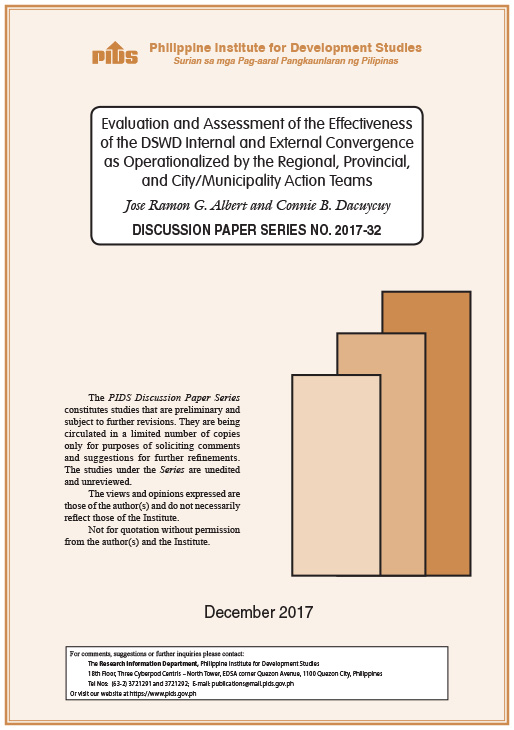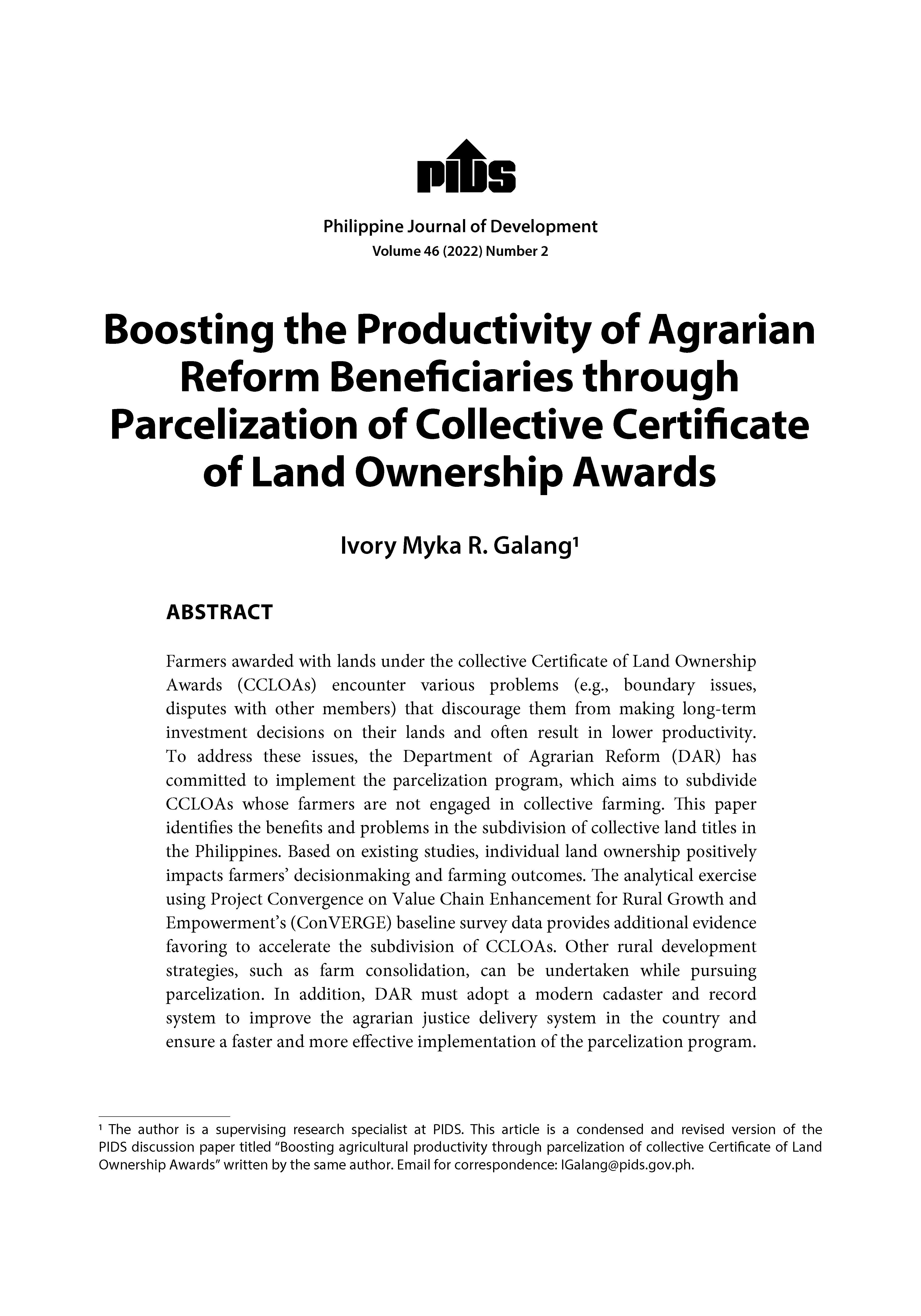On April 14, the long awaited cacao convergence was achieved.
This was when the respective cacao roadmaps of the Department of Agriculture, the Department of Trade and Industry and the Cacao Industry Development Association of Mindanao Inc. (Cidami) were harmonized to produce only one roadmap for the country to follow.
That was one of the main suggestions of the Coalition of Agriculture Modernization in the Philippines (CAMP), led by its chair, Emil Javier, and president, Ben Pecson.
This was included in the list of recommendations given to the presidential bets by the Agri-Fisheries Alliance (AFA), which is scheduled to have interviews with each of the candidates on their respective agriculture agendas.
Just as relevant government agencies of the DA and DTI are converging for cacao, agriculture stakeholders also converged when the AFA was organized on Dec. 20, 2015. CAMP represents science and academe. It united with Alyansa Agrikultura (AA) representing farmers and fisherfolk, Philippine Chamber of Agriculture and Food Inc. (PCAFI) representing agribusiness, Pambansang Koalisyon ng Kababaihan sa Kanayunan (PKKK) representing rural women and Agriculture Fisheries 2025 (AF2025) representing sub-sector agriculture leaders.
When AA reported that DTI had submitted 30 subsector roadmaps to government think tank Philippine Institute of Development Studies (PIDS) while DA had submitted none, CAMP argued that DTI and DA should agree on each roadmap. This is because processing and trade are part of a product value chain that should be guided by both the DTI and DA.
The CAMP recommendation was followed on April 14 in Davao. The National Cacao Industry Working Group is chaired by Agriculture Undersecretary Emerson Palad. DTI Director Edwin Banquero is head of the secretariat. The private sector is represented by CIDAMI executive director Valente Turtur, who serves as vice chair. This is a good example of the public-private partnership (PPP) necessary for agriculture development to succeed.
Banquero (0917-7054627) provided information that was agreed upon during the DA-DTI-Cidami harmonization meeting. Reports showed an annual income of only P20,000 per hectare for coconut without intercropping. An additional P60,000 to P80,000 is earned if cacao intercropping is done.
The latest numbers from the harmonization meeting are much more promising. With correct agricultural practices, coconut yields P60,000 to P80,000 per hectare and with the right technology, the additional income from cacao intercropping rises to P150,000.
The side effect of cacao intercropping increases coconut income by 30 percent. This is because the coconut trees will benefit from the fertilization of cacao. Also, the dry leaves that fall from the cacao plants will serve as mulching material for coconut trees, with the resulting organic fertilizer enriching the soil.
Where is science and academe in all of this?
Let us look at Central Luzon. There is an existing project of Kapampangan Development Foundation (KDF) and AA for the planting of one million coconut trees with intercropping for five years. This is done with full support from Philippine Coconut Authority (PCA) and the DA regional office. Last Nov. 10, a memorandum of agreement was signed among KDF, the First Coconut Manufacturing Inc. (FCMI) and the Florida Blanca National Agricultural School (FNAS). FCMI has 60 years of experience in coconut milling and refinery.
FNAS will add to the KDF-FCMI collaboration the benefit of being a center not only for best technology, but also for effective technology transfer. The school will showcase 10 hectares of coconut intercropped with cacao for all to learn from. Also, FNAS will have an additional five hectares for high value crops: one hectare each for BPI-accredited tree seedlings. These will serve as the scion groves for the AA-KDF accredited fruit tree nurseries.
The cacao convergence will be finalized on May 25 in Cebu. It will be followed by an Asia-Pacific Cacao Conference in September. This kind of convergence should be replicated in other agriculture sub-sectors. If we do this, we will achieve inclusive growth in the next six years.//
(The author is chair of Agriwatch, former Secretary for Presidential Flagship Programs and Projects, and former Undersecretary for Agriculture, Trade and Industry. For inquiries and suggestions, e-mail agriwatch_phil@yahoo.com or telefax 8522112.)
This was when the respective cacao roadmaps of the Department of Agriculture, the Department of Trade and Industry and the Cacao Industry Development Association of Mindanao Inc. (Cidami) were harmonized to produce only one roadmap for the country to follow.
That was one of the main suggestions of the Coalition of Agriculture Modernization in the Philippines (CAMP), led by its chair, Emil Javier, and president, Ben Pecson.
This was included in the list of recommendations given to the presidential bets by the Agri-Fisheries Alliance (AFA), which is scheduled to have interviews with each of the candidates on their respective agriculture agendas.
Just as relevant government agencies of the DA and DTI are converging for cacao, agriculture stakeholders also converged when the AFA was organized on Dec. 20, 2015. CAMP represents science and academe. It united with Alyansa Agrikultura (AA) representing farmers and fisherfolk, Philippine Chamber of Agriculture and Food Inc. (PCAFI) representing agribusiness, Pambansang Koalisyon ng Kababaihan sa Kanayunan (PKKK) representing rural women and Agriculture Fisheries 2025 (AF2025) representing sub-sector agriculture leaders.
When AA reported that DTI had submitted 30 subsector roadmaps to government think tank Philippine Institute of Development Studies (PIDS) while DA had submitted none, CAMP argued that DTI and DA should agree on each roadmap. This is because processing and trade are part of a product value chain that should be guided by both the DTI and DA.
The CAMP recommendation was followed on April 14 in Davao. The National Cacao Industry Working Group is chaired by Agriculture Undersecretary Emerson Palad. DTI Director Edwin Banquero is head of the secretariat. The private sector is represented by CIDAMI executive director Valente Turtur, who serves as vice chair. This is a good example of the public-private partnership (PPP) necessary for agriculture development to succeed.
Banquero (0917-7054627) provided information that was agreed upon during the DA-DTI-Cidami harmonization meeting. Reports showed an annual income of only P20,000 per hectare for coconut without intercropping. An additional P60,000 to P80,000 is earned if cacao intercropping is done.
The latest numbers from the harmonization meeting are much more promising. With correct agricultural practices, coconut yields P60,000 to P80,000 per hectare and with the right technology, the additional income from cacao intercropping rises to P150,000.
The side effect of cacao intercropping increases coconut income by 30 percent. This is because the coconut trees will benefit from the fertilization of cacao. Also, the dry leaves that fall from the cacao plants will serve as mulching material for coconut trees, with the resulting organic fertilizer enriching the soil.
Where is science and academe in all of this?
Let us look at Central Luzon. There is an existing project of Kapampangan Development Foundation (KDF) and AA for the planting of one million coconut trees with intercropping for five years. This is done with full support from Philippine Coconut Authority (PCA) and the DA regional office. Last Nov. 10, a memorandum of agreement was signed among KDF, the First Coconut Manufacturing Inc. (FCMI) and the Florida Blanca National Agricultural School (FNAS). FCMI has 60 years of experience in coconut milling and refinery.
FNAS will add to the KDF-FCMI collaboration the benefit of being a center not only for best technology, but also for effective technology transfer. The school will showcase 10 hectares of coconut intercropped with cacao for all to learn from. Also, FNAS will have an additional five hectares for high value crops: one hectare each for BPI-accredited tree seedlings. These will serve as the scion groves for the AA-KDF accredited fruit tree nurseries.
The cacao convergence will be finalized on May 25 in Cebu. It will be followed by an Asia-Pacific Cacao Conference in September. This kind of convergence should be replicated in other agriculture sub-sectors. If we do this, we will achieve inclusive growth in the next six years.//
(The author is chair of Agriwatch, former Secretary for Presidential Flagship Programs and Projects, and former Undersecretary for Agriculture, Trade and Industry. For inquiries and suggestions, e-mail agriwatch_phil@yahoo.com or telefax 8522112.)





